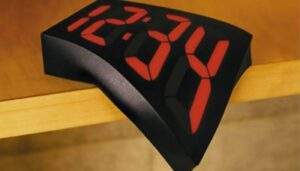Table of Contents
All About the Automatic Stay, the Ultimate Bankruptcy Protection
What is the Automatic Stay definition or meaning?
Automatic stay is the bankruptcy protection when a new petition is filed with the court. It protects against starting or continuing any debt collection. It’s a powerful provision, and stops all collection activity, maintaining the status quo on the day the bankruptcy papers are filed. Failure to respect the bankruptcy protection can lead to sanctions against the collecting creditor.
The Automatic Stay definition from the text of Section 362(a)
The official definition of the bankruptcy automatic stay is in 11 USC 362. Section 362(a) says:
“…a petition filed under section 301, 302, or 303 of this title… operates as a stay, applicable to all entities of:
- the commencement or continuation, including the issuance or employment of process, of a judicial, administrative, or other action or proceeding against the debtor that was or could have been commenced before the commencement of the case under this title, or to recover a claim against the debtor that arose before the commencement of the case under this title;
- the enforcement, against the debtor or against property of the estate, of a judgment obtained before the commencement of the case under this title;
- any act to obtain possession of property of the estate or of property from the estate or to exercise control over property of the estate…”
The section goes on, but the quote above is where most of the action in bankruptcy protection comes from.
Interpreting the automatic stay meaning in simple terms
Let’s break down what the meaning of the automatic stay is in plain English. Section 362 says that the mere filing of a what? A petition that’s either voluntary, involuntary, or joint (301-303). That pretty much covers most bankruptcy filings. Then what? It stops (stays) the start or continuing most every collection, including enforcing a judgment or trying to take anything from you.

That’s really broad, and covers almost anything you can think of. It’s like a protective shield around you, your things, and your life against all your debts doing anything to you, the person who filed bankruptcy. Or, to use another simile, the automatic stay is like a dome over a city, where the sun only shines and the birds sing, but outside the shield it’s stormy and dangerous.
There are a few limits to it, which I explain below.
When does the Automatic Stay begin?
The automatic stay is tremendous in that it begins the second the bankruptcy is filed. Why? It’s automatic. File a bankruptcy case, and boom, you’re safe. The fact that the bankruptcy protection starts the moment you file bankruptcy is extraordinary, in a sense.
“It is elementary that the automatic stay comes into existence automatically and immediately upon the filing of a petition in bankruptcy.” Webb Mtn, 414 B.R.308 (Bankr Ct, Tenn, 2009).
Normally, in law, if you want something to stop, you have to request that separately. Think of a temporary restraining order. That requires work, time, a justification, and approval. But bankruptcy protection, because it’s automatic, that is, no additional papers need to be filed to get it to kick in, it’s one of the rare exceptions in law.
You get all the benefits of safety, protection, and peace of mind at the beginning of this legal process. Your creditors have to file lawsuits, wait months or years, get the judgment, and then try to execute on the judgment to take action against you and your stuff. You merely have to begin the bankruptcy legal case before they can finish theirs against you. This is a huge time advantage for the debtor filing bankruptcy.
How long does the Automatic Stay last?
The automatic stay starts when you file bankruptcy, and typically lasts for the duration of the case.
What can end the bankruptcy protection?
There are a few things that can end the automatic stay:
- Discharge: When a normal case ends successfully, the debtor gets a bankruptcy discharge and the case is usually closed soon after that. When the discharge is entered, the stay is over.
- Dismissal: If a bankruptcy case ends unsuccessfully, the automatic stay is over also. The magic dome of sunshine disappears, and the storm clouds come right back. For that reason, dismissal is usually bad.
- Motion for Relief of the Automatic Stay (MRS or RFS): Creditors have rights also, and if the stay is hurting them unfairly, they can make it go away. Repeat after me: “There is no free car or free house in bankruptcy.” If you stop paying for the house, the mortgage can get through the automatic stay and take your house. Or put differently, if there is a house or car or something you’re financing and you want to keep it, stay current with the payments.
Wait, back up. After bankruptcy discharge, the stay ends and creditors can collect against me?
Yes, and no. It’s true that the automatic stay ends when the case concludes with a discharge. The bankruptcy discharge triggers a few legally significant events. First, the discharged debts are no longer legally your obligations. Second, if you had a bankruptcy attorney help you, their representation, per contract, is likely ended. They completed their task and are no longer your lawyer. Third, the automatic stay is also ended, as there is no more active or open bankruptcy case.
However, the good news is there is something powerful replacing the terminated automatic stay. This new protection is the Order of Discharge.
Section 524(a) says that a discharge in bankruptcy:
operates as an injunction against the commencement or continuation of an action, the employment of process, or an act, to collect, recover or offset any such debt as a personal liability of the debtor, whether or not discharge of such debt is waived
The discharge court order says your debts are gone, and any attempt to collect a discharged debt is a violation. It’s not a violation of the automatic stay, but instead, a violation of a court order. You can and should inform the creditor of this, and if they don’t back off, reopen the bankruptcy and seek sanctions for a discharge violation.
Violation of the Automatic Stay
Definition of an Automatic Stay Violation
A violation of the automatic stay is when a creditor willfully collects after they knew of the bankruptcy protection. The creditor has to have known of the bankruptcy and the automatic stay, or else they can claim as a defense that they had no notice. For this reason, it’s important to document notice of the automatic stay. When the collection company claims they didn’t know of the bankruptcy — and they will — you’ll need to have ample and abundant evidence that they did know, and that they didn’t care and collected against you anyway.
What if the Creditor doesn’t have Intent to Violate the Automatic Stay?
Creditor, after being caught with its hand in the cookie jar, may claim that golly, it didn’t intend to violate the automatic stay. The Ninth Circuit Court of Appeals has said, too bad, you intended to do the act. Intent to violate the automatic stay isn’t a requirement. Intent to do the act that violated the stay is all that’s needed. In re Pinkstaff, 974 F.2d 113 (9th Cir, 1992), quoting In re Bloom, 875 F.2d 224, 227 (9th Cir, 1989), In re Pace, 67 F.3d 187 (9th Cir, 1995).
Examples of Automatic Stay Violations
Filing a Lawsuit
One example of violating the automatic stay is where you file bankruptcy, serve the creditor notice of the automatic stay, and maybe even a letter for good measure. Then, three months later, the creditor files a lawsuit against the debtor.
The lawsuit is the commencement of a judicial proceeding against the debtor that could have been commenced before the commencement of the case or to recover a claim against the debtor that arose before the commencement of the case under this title. Slamdunk violation of the bankruptcy protection.
Starting a Wage Garnishment
Another example of an automatic stay violation is where the creditor has already sued the debtor and won in court. Now, armed with a judgment, they’re closing in on collecting. The debtor files bankruptcy, and provides notice of the automatic stay to the debt collector. Next, the collection agent contacts debtor’s employer and starts garnishing the wages.
In this case, the wage garnishment is an enforcement, against the debtor and against property of the estate (the paycheck), of a judgment obtained before the commencement of the case. Again, another obvious and textbook violation of the automatic stay.
Foreclosing on a home
Finally, let’s say the debtor has fallen behind on his or her mortgage. The home loan company is getting cranky, and finally files a Notice of Default and Notice of Sale. Next thing you know, there’s a scheduled foreclosure sale. Debtor then files a Chapter 13 bankruptcy to repay the mortgage arrearages, and provides notice of the automatic stay to the lender. Mortgage company goes ahead with the foreclosure sale, and someone buys the house.
The home foreclosure is an act to obtain possession of property of the estate (the house) or to exercise control over property of the estate. Straight violation of Section 362 of the Bankruptcy Code. Check and mate, house lender. Automatic stay violation.
Effect of the Automatic Stay on Acts that Violate it
In that last example, the home has already been sold to someone else at a foreclosure sale. But it was the result of a stay violation. What is the effect of the sale?
In California, stay violations are void. The Ninth Circuit Court of Appeals has said that “actions taken in violation of the bankruptcy stay are void.” In Re Gruntz, 202 F.3d 1074, 1081-82 (9th Cir, 2000). Not voidable, void. In re Schwartz, 954 F.2d 569 at 571 (9th Cir, 1992). No action is required by debtor to undo the act. Id.Â
The law imposes an affirmative duty on creditors to remedy stay violations by restoring the status quo, and also to establish administrative safeguards to prevent stay violations from occurring in the first instance. In re Dyer, 322 F.3d 1178, 1192 (9th Cir. 2003).
What if the Stay Violation happens Before Notice is Received
Knowledge of bankruptcy sufficient for stay; notice doesn’t have to be official
There is no requirement that a creditor be given an official Court-issued notice or form regarding the bankruptcy case. “[A] party with knowledge of bankruptcy proceedings is charged with knowledge of the automatic stay.” In re Dyer, 322 F.3d 1178, 1191 (9th Cir. 2003).
Seizing the property doesn’t make it yours
Now that we have established stay violations are void, what if creditor didn’t know when they violated it? Courts have clearly answered: Petition date controls, not notice.
The U.S. Supreme Court has ruled that property seized prepetition to collect a debt doesn’t transfer ownership, and it must be returned, pursuant to Section 542(a), even if seized by the IRS. United States v Whiting Pools, Inc, 462 U.S. 198 (Sup Ct 1983).
Even property taken by the mighty IRS before filing must be returned. With that backdrop, let’s look at cases where property is wrongfully taken after filing, but before creditor had notice of the filing.
Keeping property seized after filing but before notice is a stay violation
In the Ninth Circuit, the Bankruptcy Appellate Panel ruled that retention of repossessed car after receiving notice of stay is a willful violation of the automatic stay. “[R]epossession of the debtors’ automobile, while initially inadvertent, became a willful violation of the automatic stay when appellees failed to take any reasonable steps to remedy their violation upon learning of the debtors’ bankruptcy.” In re Abrams, 127 B.R. 239 (B.A.P. 9th Cir, 1991).
The Ninth Circuit also has held that the knowing retention of estate property violates § 362(a)(3). In re Del Mission Ltd., 98 F.3d 1147, 1151 (9th Cir.1996)(citing Abrams). The appellate court rejected the argument that creditor had no obligation to turn over the property until specifically requested. Id. at 1152.
“When a creditor lacks notice of a debtor’s bankruptcy, acts in violation of the stay may be inadvertent; however, such acts become willful stay violations when the creditor learns of the debtor’s bankruptcy but fails to take reasonable steps to remedy the violation.” In re Calloway, No. 08-18561SSC, 2009 WL 1564207, (Bankr. D. AZ. 2009) (citing Abrams)
Other courts outside the Ninth Circuit agree
Other bankruptcy courts have ruled that even if the creditor didn’t have knowledge, it must take steps to void the violation or face damages. Just to pick one: “Despite having this knowledge, Hunt deliberately refused to cooperate in voiding the sale and reconveying the Trenton property to the Debtor at any time after this date.
Clearly, these actions were willful and constitute a violation of the automatic stay for which the imposition of damages is appropriate under § 362(k).”  In re Tyson, 450 B.R. 754 (Bankr Ct, Tenn, 2011), where buyer of home sold at foreclosure had no notice of automatic stay at time of foreclosure sale, failed to return home, and violated stay and paid damages.
Wrongful repo cases: repossession after filing without notice violates stay
A wrongful repo happened after a case was filed but before the repo company had notice. What it did next is what matters: “Rather than comply with its affirmative duty to remedy its stay violation and restore the status quo, Arizona Fleet chose to remain non-responsive, took no steps to confirm or inquire as to the pendency of this bankruptcy case, filed nothing with this Court requesting any form of stay relief, sent the Debtor a notice that it intended to sell the Vehicle, wrongfully continued to maintain possession of the Vehicle, and, without merit, continues to maintain that it was incumbent upon the Debtor to retrieve his wrongfully repossessed Vehicle.” In re Altamirano, Case No. 4:20-bk-11836-BMW (Bankr Ct, AZ, 2022).
In re Carrigg, 216 B.R. 303 (B.A.P. 1st Cir, 1998), where the repo happened after the bankruptcy was filed without the creditor knowing about it, but creditor failed to return repossessed vehicle after notice of case. The creditor was sanctioned with a willful violation of stay, even though creditor had no had notice of case when vehicle was repossessed.
Chicago v Fulton, and the Automatic Stay
What 362 Giveth, Fulton Taketh Away
It used to be that if someone took something to collect a debt, filing bankruptcy created an obligation for them to return it. All that changed in 2021 when a case percolated up through the courts. The City of Chicago makes quite a pretty penny on impounding vehicles. One person lost their car, filed bankruptcy, and asked for the car back. Chicago didn’t budge. Automatic stay violation? In many places, including here in California and the Ninth Circuit, until now, yes. The Sup Court read the statute, and limited the scope and power of the automatic stay.
The car repossession taken before filing
The above repo cases involve a car taken after the case was filed. However, if the car was taken before the case was filed, from now on, it doesn’t have to be returned upon as a possible violation of the automatic stay with notice of the bankruptcy. Chicago v Fulton (In re Fulton), 141 S Ct. 585 (2021).
In Fulton, the Court said that mere retention, to exercise control, of the property taken before filing (prepetition), without some act that would disturb the status quo, is not a violation of the automatic stay. This means that retention of the car (in this case) isn’t a stay violation, and that something else has to be done to get it back. The Court suggests that Section 542 (turnover) is invoked for an adversary proceeding for turnover of the property. The problem with that is that can take months to resolve. Justice Sotomayor, in a concurrence focusing on simple motions instead, writes that “bankruptcy courts may find it prudent to expedite proceedings or order preliminary relief requiring temporary turnover.” Fulton at 594.
Not just cars: other seized property falls under Fulton
When the Supreme Court first decided the case in early 2021, there was the thought (hope?) that maybe Fulton was limited to cars seized by tow yards. That it would be a limited, narrow exception which wouldn’t really impact us here with Los Angeles bankruptcy cases in California and the Ninth Circuit. As Fulton is applied by courts, that’s turning out to not be the case.
Bank Levy of Accounts and Fulton
Later in 2021, we saw a court extend it to bank accounts. In Pennsylvania, a lender sued a debtor, won a judgment, and filed a pre-petition attachment lien on bank accounts of the debtor. Debtor filed bankruptcy and then demanded creditor withdraw the attachment as a violation of the stay. A key difference is that, unlike Fulton, creditor was not in possession of property of the estate. No matter. The court said that Fulton requires an act that disrupts the status quo to find a stay violation when it wrote, “the Court finds that Defendants’ refusal to withdraw the valid state court pre-petition attachment of the Penn East Accounts does not violate §362(a)(3). Defendants admittedly took no post-petition affirmative action as to the garnished accounts.” In re Margavitch, 5:19-05353 MJC (Bankr Ct, MD 2021).
The Ninth Circuit BAP followed Margavitch when it had a bank levy case of its own. The facts were similar: a prepetition lawsuit, and a writ of garnishment on three bank accounts. Later, debtor filed bankruptcy and demanded the creditor instruct the bank to release the funds. After a refusal, debtor claimed it was a violation of the stay. The BAP found that the city’s inaction that merely maintains the status quo does not violate the automatic stay. In re Stuart, 632 BR 531 (9th Cir BAP, 2021).
The BAP made the point again in 2022 when it said that a lien that existed on petition date where an order granted postpetition about summary judgment regarding it did not disturb the status quo and thus, did not violate Section 362(a)(3). In re Censo, 638 BR 416 (9th Cir BAP, 2022). The rationale is that the automatic stay is inapplicable in lawsuits brought by the debtor, and a defendant can defend itself without an automatic stay violation.
Wage Garnishments and Fulton
While Stuart above was a bank account case, the BAP said in footnote 12 that, if it were a wage garnishment case where the creditor captured funds postpetition, the result would be different and a stay violation. Stuart v City of Scottsdale, 632 BR 531 (9th Cir BAP, 2021), citing In re LeGrand, 612 BR 604 (Bankr Ct EDCA, 2020).
Chapter 13 Codebtor Stay
What is the Co-debtor Stay?
Chapter 13 has a codebtor stay, while Chapter 7 doesn’t. Section 1301 and its co-debor stay protects the person who may owe on a debt without that other person having to file bankruptcy. For this reason, Chapter 13 can protect a non-filing spouse better than a Chapter 7 bankruptcy.
Community liability: you both owe the debts of the marriage
California’s Family Code 910 says:
Except as otherwise expressly provided by statute, the community estate is liable for a debt incurred by either spouse before or during marriage, regardless of which spouse has the management and control of the property and regardless of whether one or both spouses are parties to the debt or to a judgment for the debt.
Further, Calif Family Code 914 says:
…a married person is personally liable for the following debts incurred by the person’s spouse during marriage …a debt incurred for necessaries of life of the person’s spouse before the date of separation of the spouses.
Translating that, because California is a community property state, both spouses owe a debt during the marriage, regardless of who is managing the budget, or racking up the debt. You’re in this together.
So, if one half of a married couple incurred a lot of debt and files bankruptcy in Chapter 13, the other innocent spouse is protected by an automatic codebtor stay. In Chapter 7, the innocent spouse can still be called and harassed and risk losing any separate property (if any) to the spouse’s collecting creditors. Why? FC 914(b) says that the “separate property of a married person may be applied to the satisfaction of a debt for which the person is personally liable pursuant to this section.”
Section 1301 Co-debtor stay to the rescue
Now we know that a spouse (or other person who may owe on a debt) is liable for debts during a marriage, even though they didn’t incur them or even have any credit cards. If the spending spouse files bankruptcy, the innocent spouse may be left hanging in Chapter 7. But Chapter 13 has a solution.
Section 1301 says
creditor may not act, or commence or continue any civil action, to collect all or any part of a consumer debt of the debtor from any individual that is liable on such debt with the debtor
There it is. A creditor may not act, start or keep doing something to someone liable on a debt with a debtor. In California, that’s typically a spouse. Automatic stay for the nonfiling spouse in the form of the co-debtor stay is a big benefit to Chapter 13 bankruptcy.
The hitch: creditors claim to not know about spouses & the codebtor stay
Amazingly, with all their fancy computers, creditors and their collection companies don’t have a way to know about or track nonfiling spouses. If John Doe files bankruptcy, they’ll flag his account, but they don’t know about Jane Doe, even though she’s listed as a Codebtor in the bankruptcy paper’s Schedule H. They do a scrub or routine check but will say they don’t know Jane’s SSN as a way to flag her, too. So they keep collecting against her, which pressures John, but golly, it’s just an accident.
This can require “educating” the creditor with notice of the stay before bringing an action for violation of the stay against them for harassing the spouse, in our example, Jane. The fallback position of the fancy slick credit card company will default to becoming Barney Fife. The billion-dollar corporation will morph into bumbling inept two-bit outfit in court who just didn’t know about the spouse and therefore didn’t have notice or any way to possibly avoid this and and thus will seek mercy from the bankruptcy judge for its incompetence. Thus, more notice, more evidence that the creditor knew about the spouse and the bankruptcy, will help you bring your violation of codebtor stay action and prevail.
Actions which are not violations of the Automatic Stay
While the bankruptcy protection of the automatic stay is wide and broad, we’ve seen with Fulton that it does have its limits. One other such limit is collection on a nondischargable debt upon property outside the bankruptcy estate.
That was the issue the Ninth Circuit BAP faced when it ruled, “‘Nevertheless, binding authority is clear that “the automatic stay provisions of Section 362 do not preclude the execution of a judgment, which has been held by the bankruptcy court to be non-dischargeable, upon property of the debtor which is not property of the estate.'” In re Cady, 266 BR 172, 180 (9th Cir BAP, 2001).
Damages: the Penalty for Automatic Stay Violations
The automatic stay is one of the few areas in bankruptcy where debtors can get their attorney fees paid by the creditor. The Bankruptcy Code provides at Section 362(k) that:
an individual injured by any willful violation of a Stay provided by this section shall recover actual damages, including costs and attorneys’ fees, and, in appropriate circumstances, may recover punitive damages.
Let’s look at these one at a time.
Compensatory: Actual Damages
Costs
Actual damages comes in a couple different flavors. First, it’s whatever the debtor is truly, actually out-of-pocket as a result of the violation of the automatic stay. Judges typically want to see receipts. It can include as mundane things as copying costs, doctor visit copays, and so on.
Attorney Fees
In addition, the statute explicitly calls for the debtor getting reimbursed by the creditor for attorney’s fees. The lodestar method for attorney compensation is used in the Ninth Circuit bankruptcy cases. In re Yermakov, 718 F.2d 1465, 1471 (9th Cir. 1983). Lodestar compensation is “strongly†presumed to be reasonable. Burgess v. Klenske, 853 F.2d 687, 691-92 (9th Cir. 1988). The only limit on attorney’s fees is if the work was unnecessary or plainly excessive. The Ninth Circuit Court of Appeals, sitting en banc, concluded that Section 362 authorizes an award of attorney fees incurred in prosecuting an action for damages under the statute, limited by unnecessary or plainly excessive fees. In re Schwartz-Tallard, 803 F.3d 1095, 1101 (9th Cir 2015)(en banc), overturning Sternberg v Johnston, 595 F.3d 937 (9th Cir, 2010).
Emotional Distress
Emotional distress damages are available in the Ninth Circuit “if the individual provides clear evidence to establish that significant harm occurred as a result of the violation.” In re Dawson, 390 F3d 1139, 1148-1149 (9th Cir, 2004).
Punitive Damages
The statute calls for punitive damages in appropriate circumstances. The definition of “appropriate circumstances” varies by judicial circuit. Here in the Ninth Circuit, it means that punitive damages for violations of the Automatic Stay require “some showing of reckless or callous disregard for the law or rights of others.†In re Bloom, 875 F.2d 224, 227 (9th Cir., 1989).
The dreaded Wells Fargo case
Wells Fargo is notorious for their national policy of administrative freeze or holds, officially called “temporary administrative pledges” (which I wrote about in my list of 12 crucial things to do before filing bankruptcy). This is where someone files bankruptcy and has money on account at Wells Fargo. Then the bank freezes the account so the debtor can’t buy groceries. One would think this is a violation of the automatic stay, but it’s not an attempt to collect a debt, but to protect assets of the estate.
The Ninth Circuit BAP ruled that because defendant exercised control of debtor’s assets postpetition, debtors “have standing to seek sanctions against Wells Fargo pursuant to § 362(k) for willful violation of the stay with respect to their interest in estate property.” In re Mwangi, 432 BR 812, 825 (9th Cir BAP, 2010). But on appeal, the Ninth Circuit Court of Appeals said that the property, while exempt, is property of the estate, but somehow does not immediately revest to the debtor, but must wait 30 days for the FRBP 4003(b)(1) exemption objection time period to lapse. In re Mwangi, 764 F3d 1168 (9th Cir, 2014).
The court analyzed it as a 362(a)(3) situation (control of property), but if it were the more common commencement or continuance of an action of 362(a)(1), the result likely would’ve been different. So, the Wells Fargo case is not an erosion of the automatic stay.
Conclusion
The automatic stay is a powerful tool to protect your client in a bankruptcy. However, you must enforce it, and have proper documentation of evidence. I’ve successfully brought actions against major credit cards for violating the stay; it can be done. if you found this helpful and are faced with a stay violation issue, consider hitting the figurative tip jar. Regardless, thank you for reading, and never stop fighting for your client and the debtor’s rights. You have significant tools and bankruptcy protections here, and you should not hesitate to hold the creditor accountable for flaunting them.





